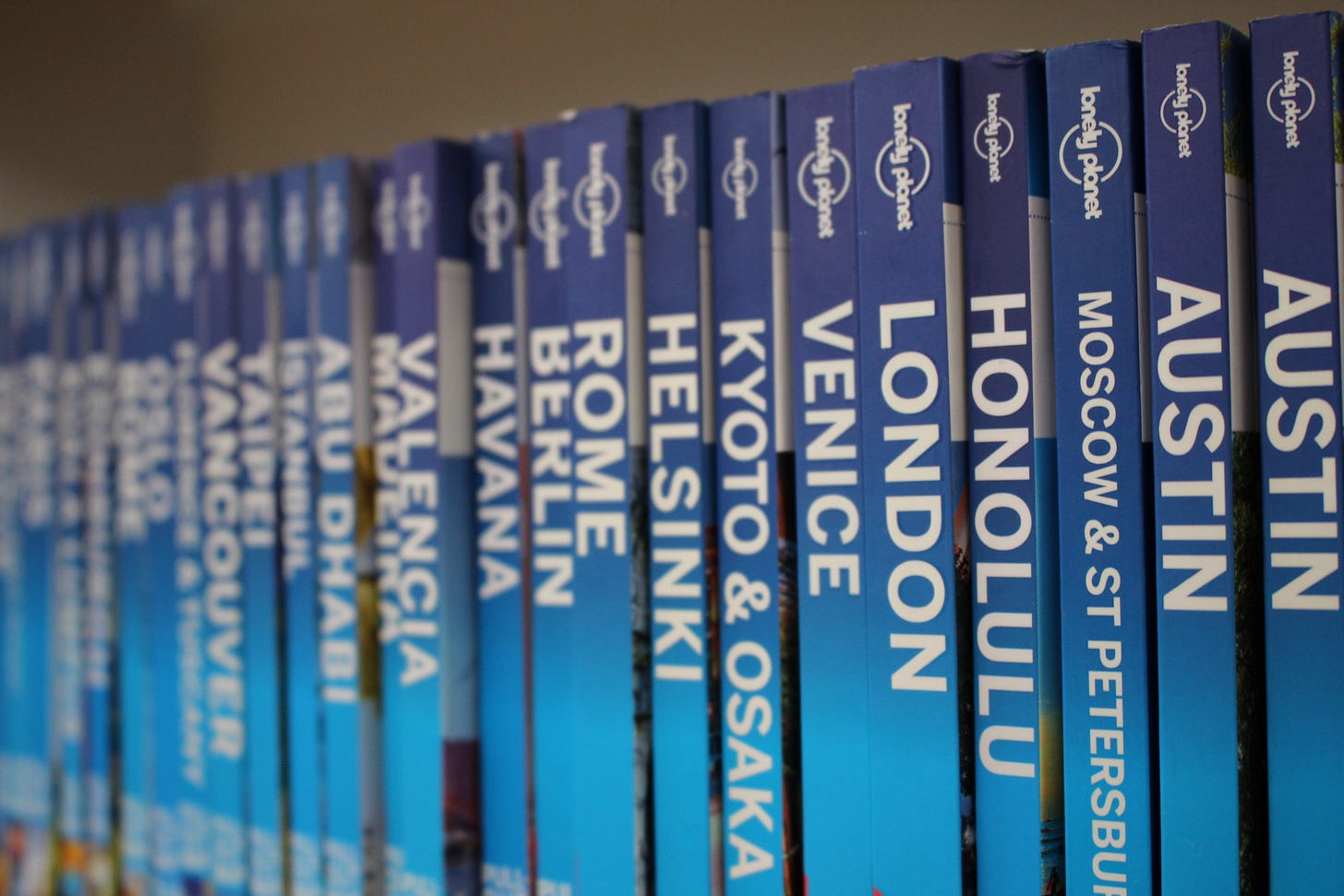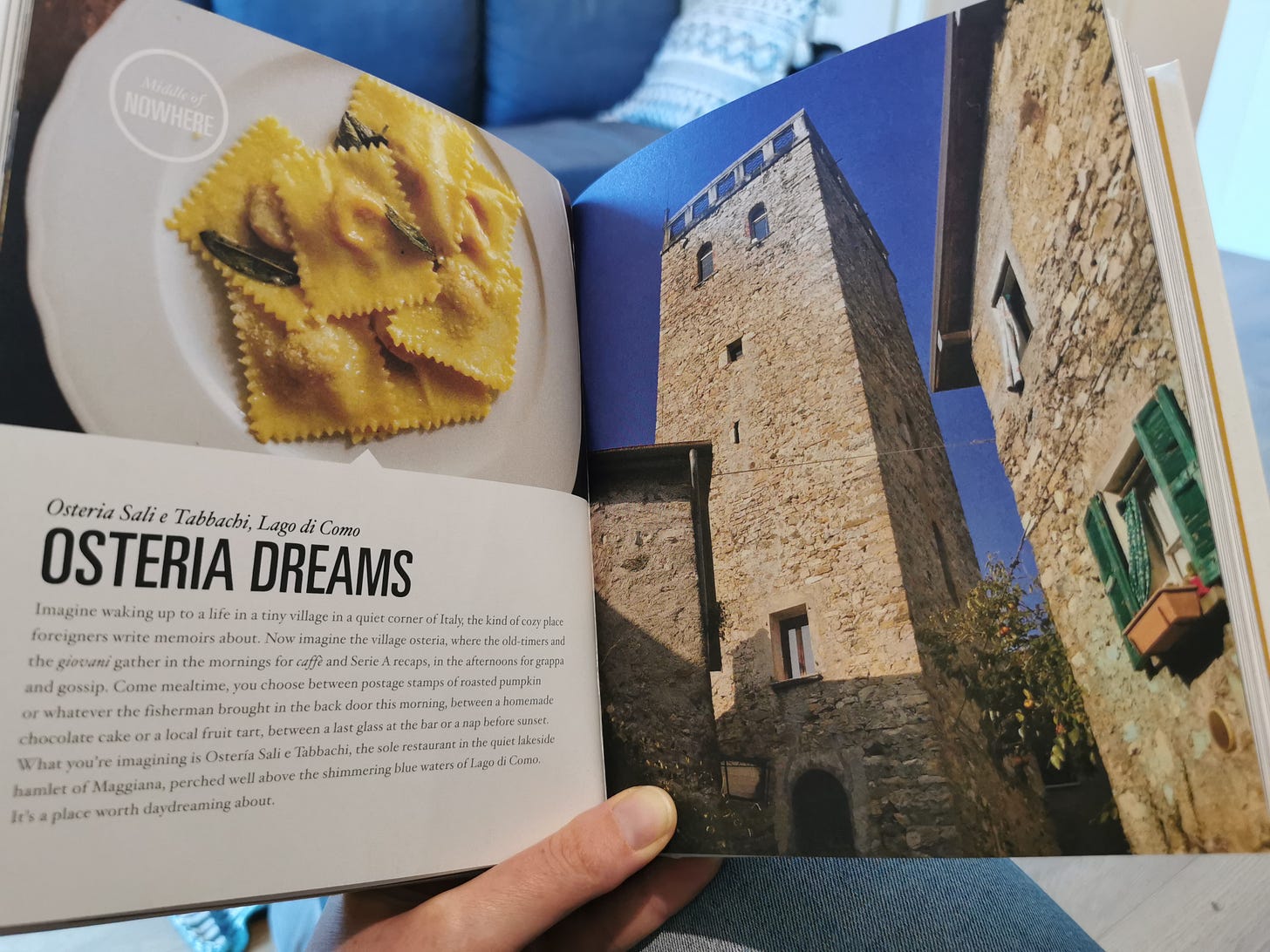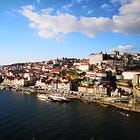A little more Bourdain, a little less TikTok
Travel guides have a responsibility to go deeper than they often do
The Sauce is made possible because of the support of my excellent paid subscribers. If you like what we’re doing here, consider joining the cohort for $5 a month or $50 a year to gain access to everything from essays to wine advice to travel guides:

There’s an old wine trade joke that you always know what a wine blogger had to eat the night before because they’ll name that dish as the “perfect pairing” with whatever wine they’re recommending — whether that dish works with the wine or not.
This popped into my head this week when I came across an online food guide to Porto. The sort where the author spent a weekend here, visited a few places with the limited time they had and recommended those, even though they weren’t especially good. A sort of if you go, it goes in the guide approach to writing.
I have to be honest, these guides don’t sit well with me, especially when — as this one was — they are written by people with impressive bylines, large audiences and bags of authority.
When a guide isn’t reflective of a place yet it lands in thousands of subscribers’ inboxes — or on millions of people’s TikTok feed — something has gone wrong.
But this is 2025-style content. We want the personal recommendations from our favourite content creator regardless of how much time they have spent in a place.
Whilst I’m all for people making useful content, the problem is when content is made for content’s sake. When people with big followings say “this is where I ate in Porto (so authentic!)” then eat at tourist traps.
That’s not going to help anyone. Not you watching the TikTok or reading the guide. And certainly not the city itself, which hardly needs another foreign-investment-owned brunch spot where tourist dollars are siphoned away from the local community as quickly as they come in.
This isn’t any single creator or author’s fault. They are at the mercy of the internet hamster wheel. Make content, and make it often. Don’t stop lest the money dry up.
In this mode, there simply isn’t time to spend weeks or months researching the town they want to film or write about. So unless your favourite content creator or writer has visited a place multiple times, has a great fixer or lives there, they run the risk of creating a surface-level guide.
A guide not filled with good but with what is simply good enough.
“‘I don’t really go with market research. I kinda go with my gut.”
That is a quote from Daniel Houghton, a then-25-year-old wedding photographer who in 2013, became the CEO of Lonely Planet.
As an elder millennial, I remember when Lonely Planet was the travel resource. In 2007, I carried four of their books with me on a three-month trip around Europe, prioritising them above arguably more essential items like clothes.
We trusted these guides. We knew they were written by boots-on-the-ground travelers who lived and breathed the subject.

But of course, times have changed and with it, the guides have changed too. In the wake of Houghton’s appointment, he laid off nearly one-fifth of his workforce. Rumours began to circulate that LP was using recycled content from TripAdvisor or Google. Houghton talked about turning LP into a content-generating machine:
We’ve never looked at Lonely Planet just as a book company, or a guidebook publisher …we’ve always looked at it as a content company.
None of this is especially surprising. To properly research a guide takes two precious resources that few companies possess — time and money.
And the landscape of recommendations has changed too. No one needs to carry five kilos of guidebooks anymore, they can simply fire up social media where there are limitless two-minute videos on the best places to eat and drink in *insert place here.*
These videos also have metrics that would make the likes of LP’s eyes water. Eating With Tod, for instance, threw up a one-minute 29-second guide to eating in San Sebastian, which has amassed 1.4 million views in just four months.
How can a properly researched guide compete with that?
By most metrics, it can’t. But that doesn’t mean we should contribute to the noise by throwing out our own hastily put-together guide in the name of getting content out there.
Lately I’ve been having nightmares about Italy. Nightmares about what Italians will think about another foreigner’s take on their traditions. Nightmares about getting it wrong — about mistaking Parmesan for pecorino, pancetta for guanciale, spaghettini for spaghettoni.
This is part of an email chain between food writer Matt Goulding and Anthony Bourdain. Matt was writing a guide to Italian food culture, Pasta, Pane, Vino. To write it, he spent six months immersed in Italian culture, eating hundreds of dishes and talking to countless chefs, nonnas and food manufacturers.
He didn’t “think with his gut” like Lonely Planet’s CEO. Instead, he put his own feet on the ground and researched. He immersed himself.
He also displayed humility. There is an arrogance to Lonely Planet allegedly using Google or TripAdvisor to create content. Matt’s approach was the opposite. He treads lightly. He cares about getting the right information out there.
The result is a book so evocative it might make you seriously consider moving to Italy.
Matt wrote this book in 2018, arguably a different time. TikTok-style travel wasn’t yet a thing and Instagram Reels wouldn’t exist for another two years. But the internet landscape wasn’t perfect then either. SEO content ruled. Plenty of food travel content was mediocre at best, often recommending the famous and the popular to move up Google’s rankings.
Yet Matt managed to write a book that is so evergreen that you can read it seven years after release and still find it relevant. I still dip in and out of it to this day.
I’m not surprised that Matt was in the orbit of Anthony Bourdain, the OG food and travel content creator (for want of a better phrase). Bourdain was someone who went deep. He knew how to convey not only where to eat but how food informs local culture.
You could argue that Bourdain was a fly-by-night creator. Each episode of No Reservations for instance took just 10 days to film.
But the level of research that went into each episode was immense. Planning for Parts Unknown could take months or even years. Fixers were seen as Gods — they could make or break an episode.
More than this, Bourdain was at his best in the places he knew personally. You can feel his child-like excitement at dining with Paul Bocuse in Lyon. You feel the deep levels of contentment he radiates in the Vietnam episodes:
“Does everybody fall in love with the country like I did? I came here and it stole my heart”
The best of Bourdain is found in the places he loves.
You can’t fake that.
Despite it being seven years since Bourdain’s death, his work, like Matt’s, is still incredibly relevant, popular and inspirational for food writers (including me) across the world.
They are also the antithesis of what we are used to seeing in 2025. Social media travel videos. Quick, surface-level travel blogs written after 48 hours in a city. SEO-heavy — or even worse, AI-written — content.
This content may be popular, but that doesn’t make it useful. There are few TikToks of Porto I see, for instance, that a) have a solid list of recommendations and b) capture the feeling of what it’s really like to be in this city.
To find the gold means sifting for content written with love — not just clicks or views — in mind. It means finding guides that are written by people who have gone deep. Who have spent serious time in a place before they even think about putting pen to paper or their face to video.
It’s why I only write guides for places I know very well. Places I’ve lived in or spent serious time in, like Logroño, my home for six months:
Or my current home of Porto:
I truly believe that we travel, food and drink writers have a responsibility to you — our readers — to do deep research. To write guides or articles that inspire visitors to sink deeper into the places they visit. To avoid the tourist traps or the poor quality but Insta-friendly places.
A little more Bourdain, a little less TikTok, and everyone wins.







Such a thoughtful and resonant piece....has me rethinking what I pay attention to when I visit new places.
I came across your profile this morning and every piece I have read so far resonated with me! It's nice to know there are other women in food/wine/hospitality that are feeling the same way about the current state of travel writing. Well, not writing, captioning. True writing takes time, research, and background knowledge of culture and customs. My observation: short-form videos created by a passerbys (travel content creators) may gain views but they lack viewership. Like an advertisement on the metro, everyone sees it, but not everyone scans the QR code to learn more.